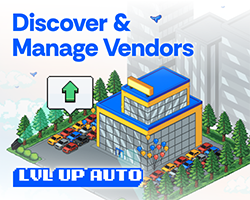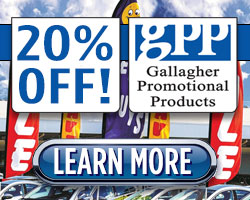Since the beginning of car sales, we have tried to find that elusive balance between holding gross and increasing volume.
OEMs would love nothing more than to have an army of sales professionals whose sole focus was moving product- so much so, many of them have decreased profit margin to all time lows in the name of “customer satisfaction”; leaving dealerships with fewer and fewer ways to generate revenue.
So how do we continue to hold gross in a climate that has very little of it to hold? TRADE -IN VALUE!
Trade-in value is the missing ingredient to generating and holding gross in the new car deal, and increasing revenue in the used car deal. The trade-in is one of the most emotional aspects of a negotiation. Here is a vehicle that a customer has loved, repaired, cleaned and relied upon for transportation. It is a vehicle they “feel” about and an area of the deal that causes the most stress- not because they are not ready to part with it (however I have seen my share of hair pulling and crying during delivery about the old vehicle) but due to how we handle the presentation of figures on it.
Rarely do we take the time to explain our process and how we arrived at the value. Frankly, we generally send a sales person into a negotiation with a number they do not understand or know how to defend. To make matters worse, we are then very quick to back off the number and give in if we smell a potential sale. These practices have trained our customers to distrust our figures, fight us on value and detest the overall transaction.
The best way to build Gross in a deal and trust with a customer is full disclosure on the trade.
FULL DISCLOSURE?
Yes I know this is a foreign concept in the car business, but one that is truly effective. Here is how it works:
- Sales people complete a walk-around on a customer trade with the customer prior to the appraisal. At this time, they take note of any visible imperfections and discuss the hows and whys of the trade and the desires in the new vehicle.
- During the appraisal, Managers record and give a cash value to any possible reconditioning requirements. These can include: bald tires, dents & dings, ripped or stained interior, etc
- A 3rd party source is printed, like kbb.com on the customer vehicle along with itemized reconditioning expenses.
- The sales person, armed with the 3rd party source, goes back into the deal and presents the information in the following manner:
“Mr. Customer, KBB says your vehicle is worth X, and we AGREE. However, in order to get your car retail ready, there are some reconditioning expenses we have to take care of… you remember when we were walking around your vehicle and saw….”
Using a valid and well known 3rd party source verifies value and removes barriers that get in the way of making a deal. In addition, on average, you will under allow about $500 per trade- which equals BIG GROSS in the end.
You will be amazed at how easy it is to implement. The Cardone Group is a great proponent of this system and the company that introduced it to me. Go ahead and give it a try, you might just find extra Gross hidden in all your deals!
How do you handle the Trade-In at your dealership?








